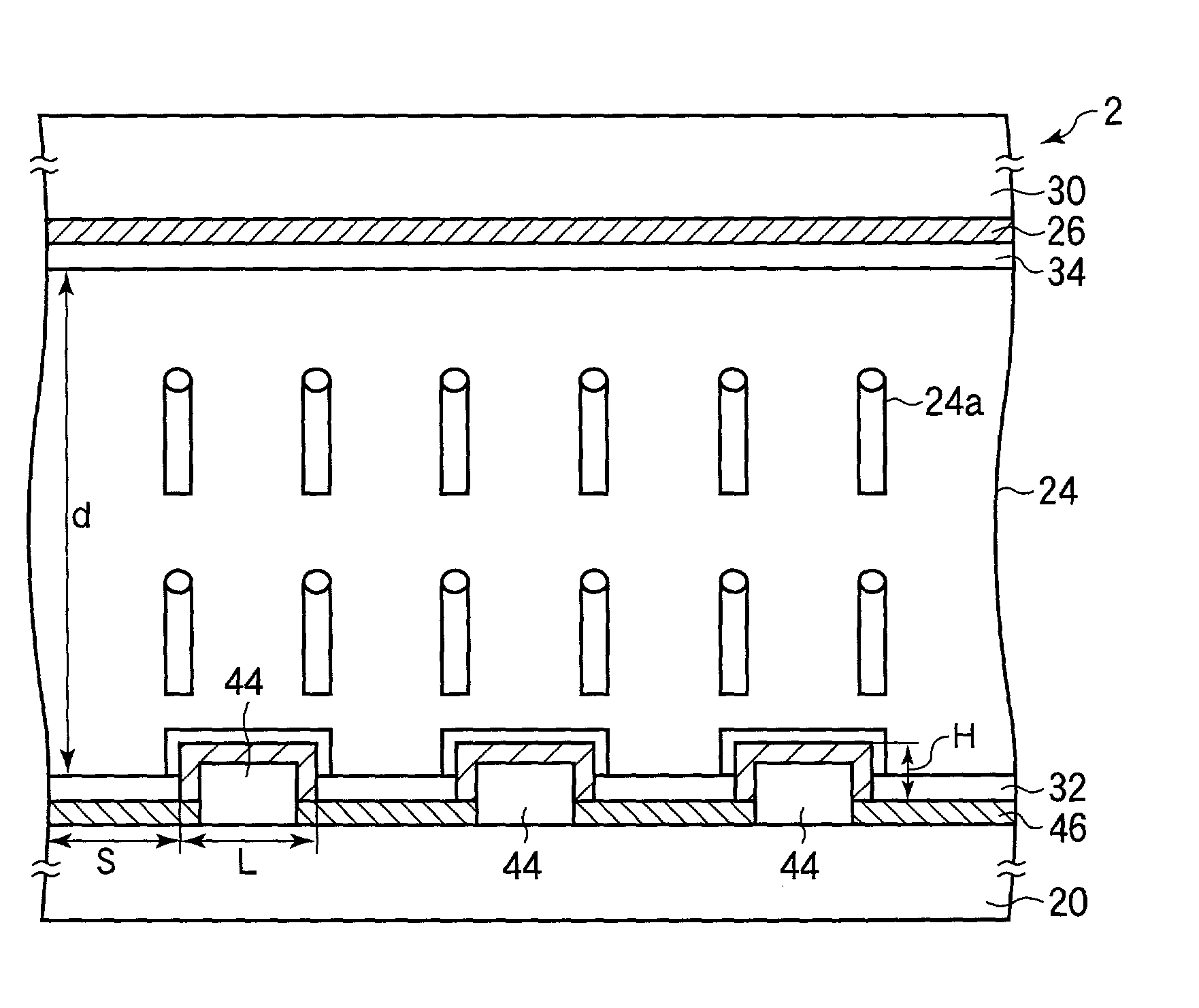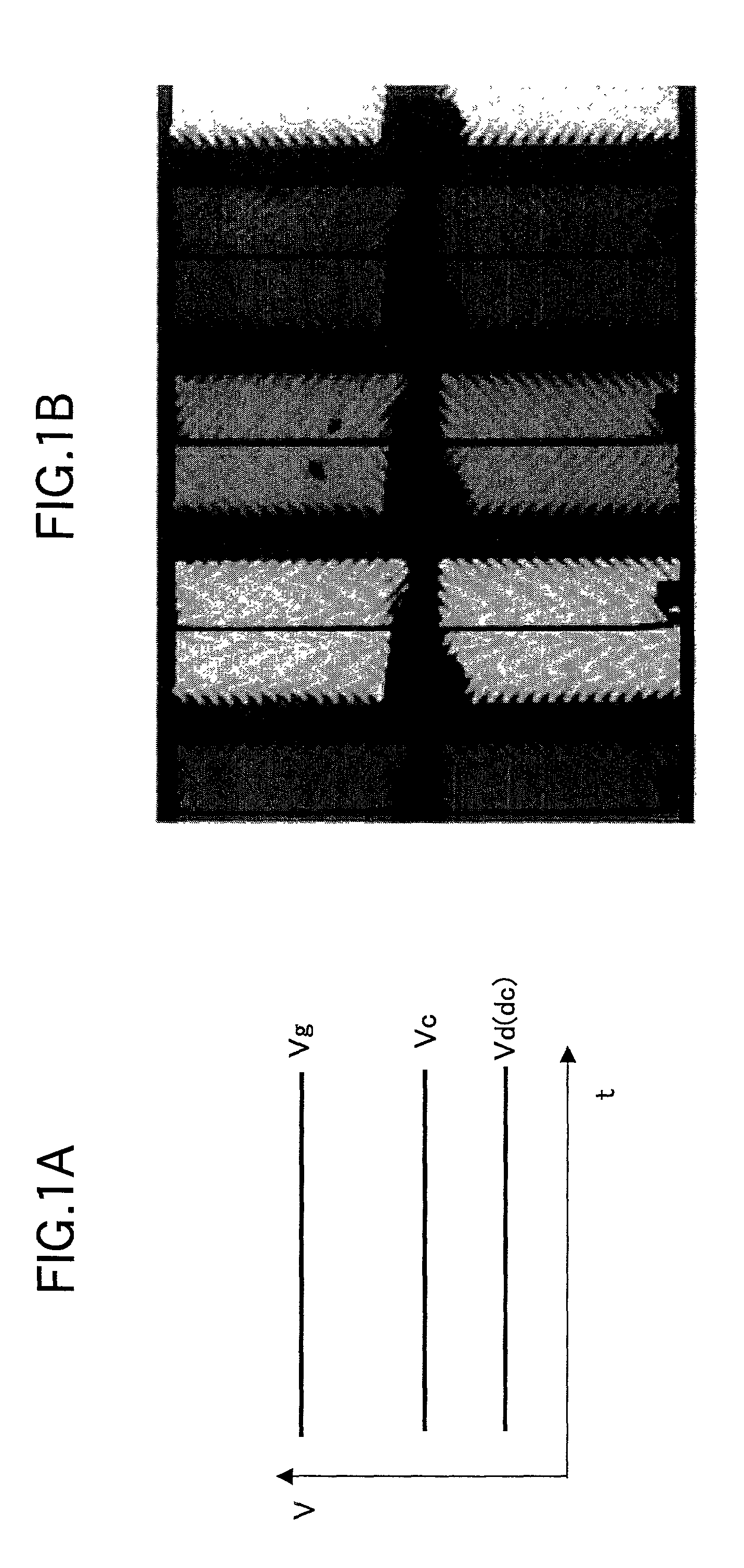Liquid crystal display and method of manufacturing the same
a technology of liquid crystal display and liquid crystal, which is applied in the field of liquid crystal display, can solve the problems of low white luminance, low response speed, and time-consuming fixation of alignment, and achieve the effect of shortening the response time at a halfton
- Summary
- Abstract
- Description
- Claims
- Application Information
AI Technical Summary
Benefits of technology
Problems solved by technology
Method used
Image
Examples
first embodiment
[0111]A liquid crystal display according to a first embodiment of the present invention and a method of manufacturing the same will be described with reference to FIGS. 1A to 21B. First, a first principle of the liquid crystal display and the method of manufacturing the same according to this embodiment will be described with reference to FIGS. 1A and 1B. FIG. 1A shows a liquid crystal driving method according to the first principle at the time of polymer polymerization in an MVA-LCD to which an alignment fixation processing by a polymer fixation system is performed. FIG. 1B shows a display state of the MVA-LCD in which a polymer formed by the liquid crystal driving method of the first principle shown in FIG. 1A exists in a liquid crystal layer. The n-channel type TFTs are used in this MVA-LCD.
[0112]In a polymerization step of a manufacturing stage of an LCD, the liquid crystal driving method according to the first principle is based on direct-current voltage driving, and an alterna...
example 1-1
[0127]This example will be described using FIGS. 1A and 1B and FIGS. 4A and 4B again. In this example, an XGA panel (pixel pitch was 297 μm, and the number of pixels was 1024×768) having a size of 15 inches in diagonal was fabricated. The pixel structure of the panel is shown in FIGS. 4A and 4B. An n-channel TFT 16, a drain bus line 6, a gate bus line 4, and a pixel electrode formed of connection electrodes 12 and 14 and a plurality of stripe-like electrodes 8 were formed on an array substrate including a glass substrate 20. A color filter layer 28 and a common electrode 26 were formed on an opposite substrate including a glass substrate 30. A glass substrate having a thickness of 0.7 mm was used as a substrate material. The plurality of stripe-like electrodes 8 were formed to extend in four directions (upper right, lower right, upper left, lower left) from the center portion of the pixel, respectively. The electrode width of the stripe-like electrode 8 was made 3 μm, and the width ...
example 1-2
[0141]This example will be described with reference to FIGS. 2A and 2B. This example is the same as the example 1-1 except for the following requirements. The driving voltage was applied to the liquid crystal layer 24 under a voltage application condition 2 subsequently to a voltage application condition 1 mentioned below, and the driving voltage was further applied under a voltage application condition 3, and light irradiation to the liquid crystal layer 24 was performed at the stage of the voltage application condition 3;[0142]voltage application condition 1: Vg=33 V, Vc=Vd (dc)=13 V,[0143]voltage application condition 2: Vg=33 V, Vc=20 V, Vd (dc)=13 V, and[0144]voltage application condition 3: Vg=33 V, Vc=Vd (dc)=13 V, Vd (ac)=7 V (30 Hz).
[0145]After the liquid crystal driving similar to the example 1-1, while the common voltage Vc was made to gradually approach the value of the data voltage Vd (dc), the amplitude of the data voltage Vd (ac) was gradually increased. By this, in t...
PUM
 Login to View More
Login to View More Abstract
Description
Claims
Application Information
 Login to View More
Login to View More - R&D
- Intellectual Property
- Life Sciences
- Materials
- Tech Scout
- Unparalleled Data Quality
- Higher Quality Content
- 60% Fewer Hallucinations
Browse by: Latest US Patents, China's latest patents, Technical Efficacy Thesaurus, Application Domain, Technology Topic, Popular Technical Reports.
© 2025 PatSnap. All rights reserved.Legal|Privacy policy|Modern Slavery Act Transparency Statement|Sitemap|About US| Contact US: help@patsnap.com



